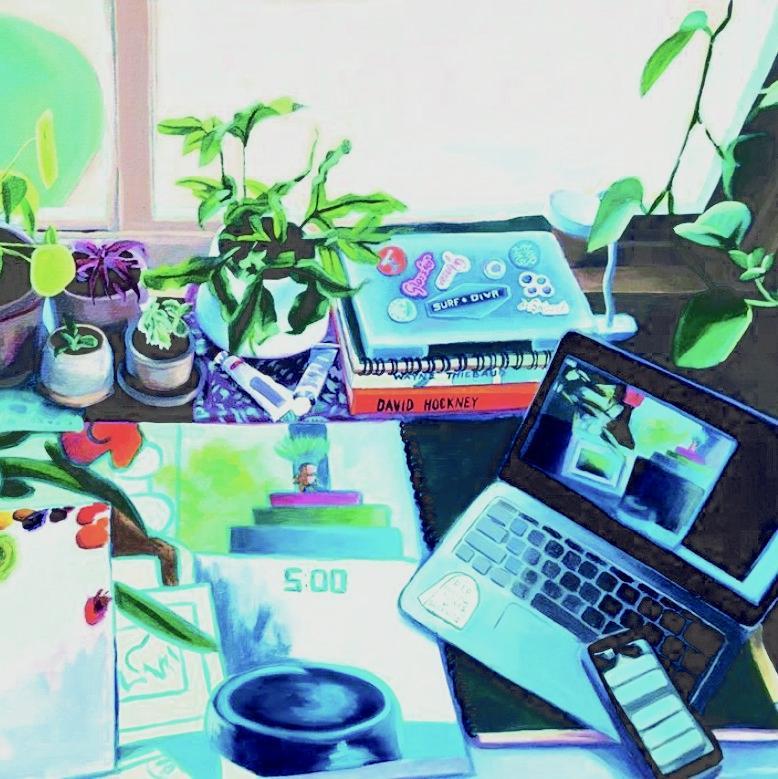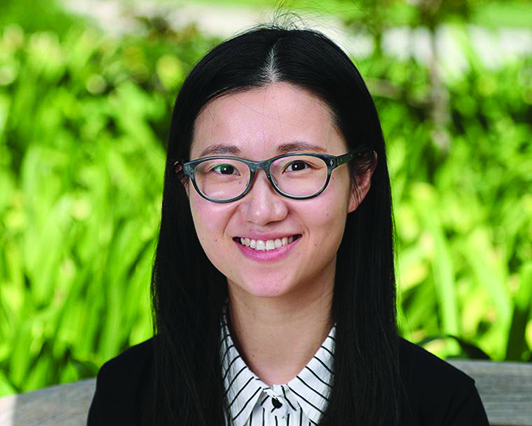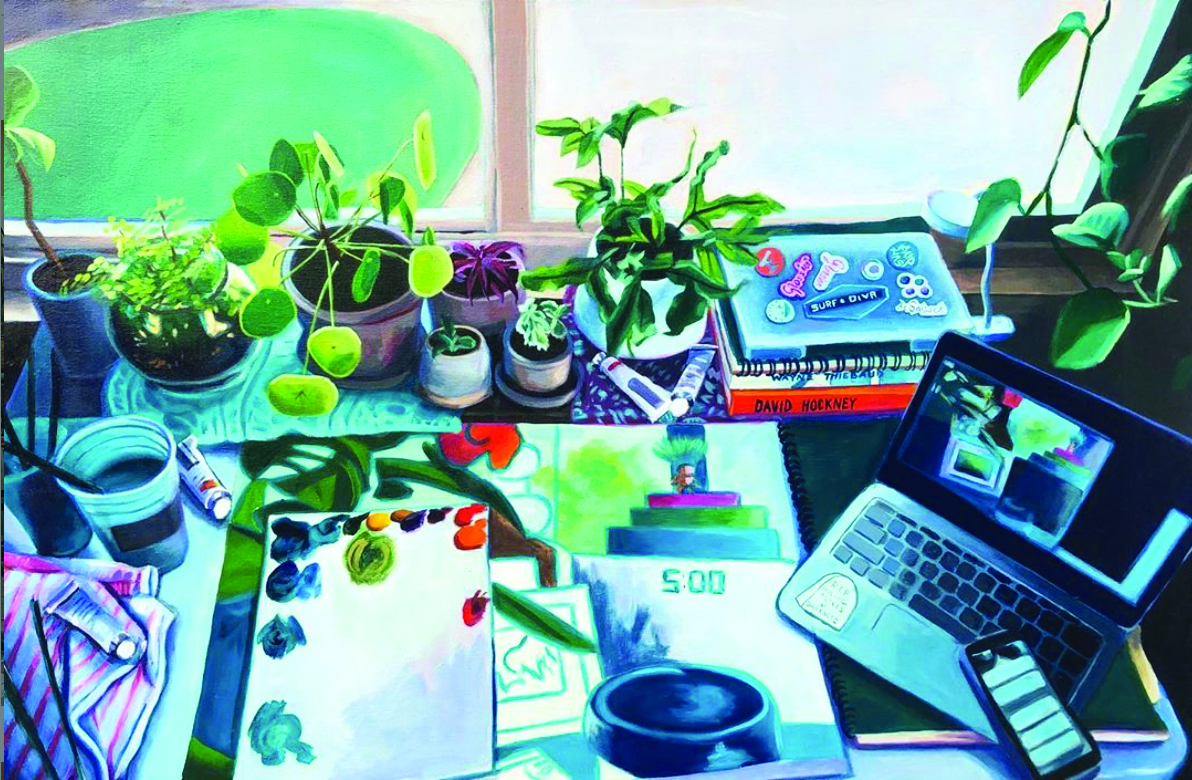
Integrating the Catholic Intellectual Tradition into Graphic Design Courses and Scholarship

By Qiuwen Li
Assistant Professor of Graphic Design
Department of Art and Art History
Santa Clara University
Integrating the Catholic Intellectual Tradition into Graphic Design Courses and Scholarship
As a non-Catholic faculty member, I have always had a keen interest in history. When I received the email from the Ignatian Center about the Catholic Intellectual Tradition (CIT) Faculty Seminar, I was particularly interested in knowing more about the Jesuit Catholic tradition, its relationship to higher education and history, how it began, and how it developed throughout the years. After six meetings throughout the winter and spring quarters with a cohort of faculty across the University, the study, conversations, and reflections offered me the opportunity to reflect on the relationship between teaching and scholarship. Additionally, the experience attested to how values within the CIT support what I am doing at Santa Clara University.
What Is Solidarity?
Political theologian Gerald Beyer contends that the Bible may not use the word, but solidarity has become a central concept in Christian ethics and provides a foundation upon which Catholic Social Teaching (CST) is built. In addition, Beyer claims that, “the conceptual seeds of solidarity lie in the earlier Christian concept of charity.”2 Max Scheler defined solidarity as, “the co-responsibility of each individual for the moral well-being of all others.”3 Solidarity helps us to see the “other”—including people who are different from us or disagree with us. It’s important to remember that differences will enrich us, rather than divide us. Furthermore, solidarity enables us to go beyond our own self-interest and become members of a community.
We live in a competitive world. Students are competing with each other for grades and job opportunities. As the Jesuit university in Silicon Valley, how do we encourage solidarity rather than competition? To take a small step toward that, collaborative learning helps our students to develop respect for the diversity of humanity when in the classroom. Every student is a different individual with a different learning style who exhibits different tempos, reacts differently to failure, and so on. A good designer first must be a great team player. The majority of design projects, in fact, are group efforts in the real world. Collaborative learning helps students develop the skills that are increasingly important in the professional world. As teachers, we should never assume students already know how to work as a group. Even if they have worked on group projects before, they still need instructions and guidelines to develop effective teamwork skills. For a diverse student body, it’s also a great opportunity for them to learn from each other and gain an appreciation for cooperation. In my design classes, I used class activities like “Tallest Paper Tower” and “Spaghetti Challenge” to teach students teamwork skills and rough prototyping. Through these simple activities, my goals are to get everyone to work as a team and become more comfortable creating and prototyping.

Graphic design is a creative visual arts discipline that combines critical thinking, design research, principles, and techniques intended to transmit specific messages to target audiences. In design education, curriculum development has evolved from creating something aesthetic to being focused on the people who use the design. This approach has also been called human-centered design and keeps focus on people to “ensure that the result fits human desires, needs and for people to use.”4 As a faculty member at a Jesuit university, I also find that the design industry addresses the importance of design to the “common good” that affects society positively as a whole. Movements like Design for Good have inspired many designers and design students to build their practice to benefit our world, countries, and communities.
CST has envisioned three moments and three aspects of solidarity: 1) recognition of “factual solidarity” 2) initial response to solidarity’s ethical imperative and 3) embodying solidarity in policies and institutions.3 To have true solidarity, it’s not enough to read Jesuit, Catholic tradition, we all should practice our faith and act as a contribution to the “common good” of society at large. There are many ways to teach our students to practice solidarity every day, for example, finding local volunteer work, walking or biking to nearby places, etcetera. The more we empower ourselves, the more we will empower our students. As members of the SCU community, we also need to set role models for our students in our everyday lives.
What Is Catholic Imagination?
The reading from Angela O’Donnell, Seeing Catholicly: Poetry and the Catholic Imagination, looks at the aspects of the Catholic faith that are central to a sense of the Catholic imagination.5 Catholic imagination helps students better understand the globe and engage with issues and challenges facing the contemporary world. Likewise, integration of social responsibility into the graphic design curriculum has become more important in today’s classroom. What projects should be added to the design curriculum? What books or articles should we consider when selecting learning materials? What voices are we encouraging as teachers? It’s not just about keeping course materials up to date to reflect changes, but to be inclusive in a positive way. When we talk about Catholic tradition, we need to include the voice that has not been heard for so long.
When designing for others who are different from ourselves, how can we teach our students to bring imagination into learning? In design, empathic design is powerful because it puts ourselves in someone else’s shoes. OmwanaThrive is a comprehensive educational application our students built for mothers in rural Uganda. Ugandan women have little access to reliable health care. The aim of this project is to alleviate the fear surrounding childbirth and empower women with the knowledge to care for themselves and their newborn babies. It is a collaborative senior design project consisting of engineering, public health, biology, and art students. Through the project, our students learn the importance of empathy in design to understand users’ needs and the emotions of the target users they are designing for.
To establish deep, personal empathy with users to determine their needs and wants, the empathy map is a great tool to use in a design classroom. The empathy map can be varied in shapes and sizes, but there are basic elements common to each one. The map is broken into quadrants—seeing: seeing the world; feeling: appreciating them as human beings; thinking: understanding their feelings; and doing: communicating your understanding. To use it in a design classroom, students bring any personas, data, or insights about the target of their empathy map. They print out and sketch the empathy map template on a large piece of paper. They write down thoughts on sticky notes, ideally adding at least one sticky to every section. When they work on it, students can self-ask questions to help them make decisions, such as, “What would the user be thinking and feeling? What are some of their worries and aspirations?” Much like a user persona, an empathy map can represent a group of users, such as a customer segment.
Like Confucius said, “He who learns but does not think is lost. He who thinks but does not learn is in great danger.” Graphic design education for the 21st century is not only facilitating the students’ acquisition of knowledge, but also teaching students the vision of a desired destination, long-term goals, and imaginative vision. For a diverse student body, the design curriculum believes in every student’s potential and is designed to push students outside of their comfort zones, exploring the “mysterious” and the unknown. As a discipline that focuses on creativity and forward thinking, design education encourages students to contribute their own perspectives in the design process.

Stina Arstorp, Still Life 4, 2020
Solidarity and Catholic Imagination in Scholarship
Solidarity and Catholic imagination are important CIT values that have been guiding me to be a better visual artist. My scholarship revolves around experimental typography, user experience (UX), user interface (UI), and data visualization. Solidarity helps me hear the “cry of the wounded,” understand their situations, and use design as a tool to promote social change.
“Big Data of the COVID-19 Data Visualization” is the latest project I’ve been working on. The piece intends to transform big data into visually data-driven stories to communicate and explain facts. Returning to “normal” from the COVID-19 pandemic addresses systemic problems and demands novel perspectives on inconsistent access to health care, racial residential segregation, and risk factors for the poor and people of color. The visualization of data helps to convey a true and reliable story of the past and the present, and predicts the future with big data. While the past year gave us many challenges, it also brought many opportunities for a better world. The pandemic provided opportunities like rethinking business models, realizing the requirement of a healthy and diverse community, and educating our students in ways to support the “common good.”
My work is strongly influenced by my international background. As a Chinese woman living in the U.S., I am in an in-between position, which also brings a distinct perspective to my thinking, being, and making. Catholic imagination helps me understand difference and appreciate differences across cultures. My UX/UI design work focuses on exploring and embracing the ambiguity of human behaviors and interactions in order to understand emotional responses and experiences for users. In addition, my research considers how cultural shifts influence UX/UI and how we are supposed to translate them into user experiences. My current piece, “Happiness Participatory Media: Cultural Differences in Happiness on Instagram,” observed the patterns of the photographic dataset to discover the universal happiness expression today from both the Western and Eastern cultures through social media, in particular via Instagram. By using a virtual reality experience, users can effectively observe the thought-provoking visual patterns of data at the objective perspective and recognize the gravity of influences on one’s viewpoints, perceptions, and identities as well as happiness and satisfaction regarding standards of living.
Although the vision of this paper is to reflect on the readings and conversations as they relate to our scholarship, teaching, and service at SCU, it is still too early to draw conclusions. For me, the CIT Faculty Seminar taught me where we were, where we are, and where we are going. Looking ahead, the future is bright, but it’s a long journey. Like Martha Nussbaum said in Cultivating Humanity:
It is up to us, as educators, to show our students the beauty and interest of a life hat is open to the whole world, to show them that there is after all more joy in the kind of citizenship that questions than in the kind that simply applauds, more fascination in the study of human beings in all their variety and complexity than in the zealous pursuit of superficial stereotypes, more genuine love and friendship in the life of questioning and self-government than in submission to authority. We had better show them this, or the future of democracy in this nation and in the world is bleak.6
Qiuwen Li is an assistant professor of graphic design in the Department of Art and Art History at Santa Clara University. She also is the co-founder of emotionlab, a progressive research lab to create positive emotional experiences for people through innovative design approaches to human problems. Her work engages viewers in a way that evokes playing games and figuring out puzzles. As a Chinese woman living in the US, Qiuwen is in an in-between position, which also brings a distinctive perspective for her thinking, being and making.
Notes
1 Carmody, D. L. (2002). The Catholicity of the Catholic university. Conversations on Jesuit Higher Education, 22(1), 4–9.
2 Beyer, G. J. (2014). The meaning of solidarity in Catholic social teaching. Political Theology, 15(1), 7–25.
3 Stjernø, Solidarity in Europe, 208.
4 Norman, Don. (2013). The Design of Everyday Things, 218.
5 O’Donnell, A. A. (2011). Seeing Catholicly: Poetry and the Catholic Imagination. The Catholic Studies Reader, 331–51.
6 Nussbaum, M. C. (1998). Cultivating humanity. Harvard University Press.